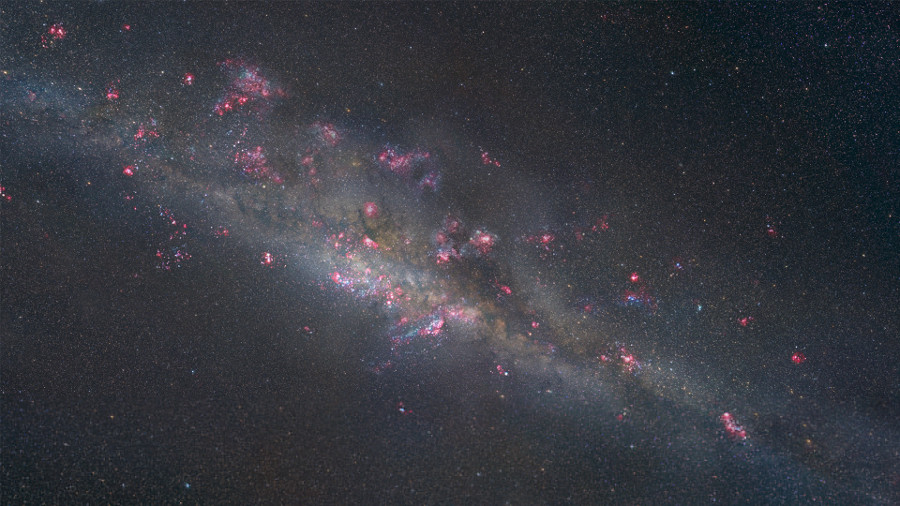Researchers using NASA’s Hubble Space Telescope found a new disk-shaped galaxy surrounded by clusters of newborn stars. They compared the sighting as if the universe launched fireworks. Apparently, the cosmic event took 11 billion years before reaching the Hubble’s lenses, which is just 2.7 billion years after the Big Bang.
The data comes from the Sloan Digital Sky Survey, which features the sightings made during the Hubble Telescope’s four-year mission. The sum of all image data from the survey adds up to one-fourth of the observable sky.

This particular discovery is the result of analyzing the much smaller Sloan Giant Arcs Survey, which comprises observations where gravitational lensing is present.
Gravity serving as a magnifying lens to find newborn stars
Thanks to gravitational lensing, the images captured by the Hubble Space Telescope are 30 times sharper. Einstein’s general theory of relativity first predicted the effect; it occurs when light becomes distorted due to gravity before it reaches the observer. First proposed by Einstein in 1936, it had to wait until 1979 for verification.
To interpret the images, researchers used computer simulations and specialized coding to see how the galaxy would look without the distortion effect resulting from gravity lensing. The result was two dozen clusters of newborn stars, from 200 to 300 light-years wide, located in the SDSS J1110+6459 galaxy cluster.
The finding helps shed light on the theories of star formation, suggesting that newborn stars are at least 1,000 times larger than what the recent discovery shows. Additionally, the presence of gravitational lensing significantly improved the information obtained; NASA researchers claim that if it were not present, the stars would have been “unremarkable” to the telescope.

The stars are 6 billion light-years away from Earth, and they are surrounded by hundreds of other galaxies located in the same cluster.
“When we saw the reconstructed image we said, ‘Wow, it looks like fireworks are going off everywhere,'” stated Jane Rigby of NASA’s Goddard Space Flight Center.
The James Webb Space Telescope will follow the Hubble’s legacy
The Hubble Space Telescope is no longer fully operational, now serving only as a communications relay. Its mission will be succeeded by the James Webb Space Telescope, scheduled for launch in October 2018. It is a big infrared telescope with a 6.5-meter primary mirror with the mission of becoming the most substantial deep space observatory for the next ten years.
According to NASA, it will study “every phase in the history of our Universe,” starting with the first sheds of light coming from the Big Bang up to the formation of habitable planetary systems. The Webb will try to spot whatever it is the Hubble missed, paying close attention to evidence of past events in the universe. It can observe beyond the “obscuring dust within the galaxy” and uncover “older, redder stars that formed even earlier in the universe’s history”.
Source: NASA
